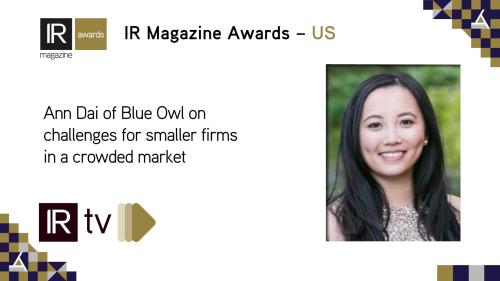Tackling the challenges faced by small and micro-cap companies
Life as a small or micro-cap public company is getting harder by the day as the pool of buy-side interest is shrinking almost as fast as sell-side research, and sales and capital markets sponsorship is contracting. Accordingly, the ‘smicrocap’ IRO’s task of finding worthwhile targets to pitch and introduce to management also grows more challenging – and, unfortunately, the smaller you are, the harder your job has become.
But credible support awaits in the form of company-sponsored (or paid-for) services. These can provide a return on investment but there are also some issues to consider. There are a number of areas of service where companies can make modest investments to augment the reach and impact of their IR communications. These include:
• Research coverage
• Investment conferences
• Meetings and roadshows
• Free or company-funded media visibility in online, print, video, TV or email formats.
Credibility and conflict of interest
Before we highlight the potential benefits of these services, let’s address the elephant in the room: what credibility do these paid-for services have, considering that the vendor is paid directly by the sponsoring company? This issue always seems to be at the forefront of perceptions about company-sponsored services, with the related issue of how vendors of these services deliver objectivity and transparency.
The fact is, virtually all activities in Wall Street are subject to some level of conflict of interest and, frankly, little would happen in Wall Street if the activity did not have a direct or indirect path to eventual compensation. To illustrate this, consider the following questions:
Where is the greatest potential for a conflict of interest?
1: A company paid $3.5 mn in fees for a project
2: A company paid $30,000 in fees for a project
3: A company paid $6,000 in fees for a project
4: A company paid between nothing and $2,000 for a project.
We assume most readers will choose the first answer because of a perception that the larger the sum of money at stake, the greater the incentive or motivation for scrapping transparency, clarity, integrity or other ethical standards to secure a project.
Now let us look at the same four options, but this time in a real-world context:
1: A company paid $3.5 mn in investment banking fees for a $50 mn offering that now receives ‘free’ ongoing research coverage from the investment bank
2: A company paid $30,000 in fees for research coverage from an independent research provider for a one-year period
3: A company paid $6,000 in fees to a vendor for two days of institutional investor marketing in Chicago and Boston
4: A company paid between nothing and $2,000 for a CEO interview and related exposure on the vendor’s website.
Does this construct of payment versus services provided begin to change your thinking on what is biased and what is not?
We all know this intuitively, and yet it seems this construct has not been fully reflected in the general perceptions of investment bank-sponsored services versus those provided by vendors for a distinct fee. As a result, we regularly hear company-paid services being dismissed as non-objective or of little or no value – and we strongly dispute this unfair portrayal. In fact, we prefer having greater clarity on the business model that underlies a report, conference or marketing trip, particularly in the case of companies with few or no alternatives for exposure.
Importantly, while we strongly support the notion of company-paid services, we must also acknowledge (as in any business) that each provider must be judged by its merits, as there are very good but also very poor vendors in every segment. Companies must perform their own research and due diligence on such service providers to ensure they engage with a quality firm that charges appropriate fees.
Paid-for support
If you’ve made the decision that a company-sponsored service is right for your company, here are a few tips on what to look for to make the most of the services you pay for.
Research coverage
The value of a research report is in bringing together all key elements of an investment story, focusing on key issues, drivers, catalysts and risks and then providing a method by which to value a company and the relative attractiveness of its current share price versus future expectations. A good report serves as eye-catching ‘CliffsNotes’ on an investment idea – saving the investor time in evaluating a company and determining whether it’s worth a closer look.
Probably as important as the quality of the report, however, is the quality and reach of the report’s distribution, because a great report that is neither found nor read by anyone will not deliver much. One of the key strengths of sell-side research is the day-in, day-out distribution and marketing of sell-side investment ideas that takes place via analysts and their sales forces to reach their institutional and retail customers. The greater the reach and support of company-paid research, the greater its ultimate efficacy.
Investment conferences
Conferences are an exposure ‘force multiplier’ to new investors. At just one event, a company story can be put in front of hundreds or thousands of prospective investors. Exposure drivers include everything from the event’s communications, outreach to attendees and company website to the audience in the room and a webcast of the company presentation and slides, not to mention the company’s one-on-one meeting participants, introductions made via social events and networking and the potential for media exposure.
Meetings and roadshows
Unfortunately, in the smicrocap segment, few major investment actions ever occur without an in-person meeting with senior management. It’s a very resource-intensive process but one that is critical to actually engaging with meaningful new investment, and getting out on the road is an ideal way to develop interest. While less efficient than conferences, roadshows are an integral part of an effective IR campaign and a good roadshow organizer should be able to identify and introduce you to relevant investment prospects.
Media visibility
Finally, while you wait for your own Heard on the Street coverage, certain media outlets help expand the reach of your story to new investor eyes. It’s hard to reach people who don’t know to pay attention so using these services can facilitate a first-time exposure/introduction with a user-friendly video or text interview. Management time required is nominal (sometimes editing the videos can take a long time) but the cost is often minimal, or even free, in the scheme of IR budgets – two more reasons why free and even paid-for media outreach can make sense as part of an overall IR program.
Despite some lingering negative perceptions that still exist (with old-timers, primarily), we have found these paid-for services can play an important and valuable role in expanding your visibility and Wall Street’s engagement in your story. Consider them a bridge to the sponsorship you want to secure longer term.
As your company becomes successful in attracting awareness from those who offer ‘free’ sponsorship, you’ll likely need these tools less and less, and ultimately not at all. But as a means to building the base of support to get to that Promised Land, paying for credible sponsorship is a smart investment that will reflect well on your IR program and build awareness.
David Collins is managing director of Catalyst Global










